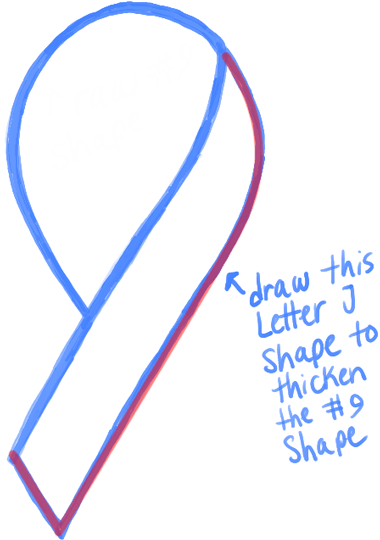Image result for drawing buildings in perspective pdf
Table of Contents
Table of Contents
Have you ever tried to draw a window in perspective but ended up feeling frustrated and giving up? Don’t worry! Drawing windows in perspective can be tricky, but with the right techniques, you can create stunning architectural drawings that will impress everyone who sees them.
The Struggles of Drawing a Window in Perspective
When it comes to drawing buildings, windows can be a daunting task. Achieving the right angle and depth can be challenging for beginners, and even experienced artists can struggle with getting the right look. This can be frustrating, leading to aspiring artists giving up on creating drawings with windows in perspective.
How to Draw a Window in Perspective
To start, understand that to draw a window in perspective, you must first determine the vanishing point. The vanishing point represents the point in the artwork where all vertical lines converge. Once you locate the vanishing point, draw two vertical lines for the sides of the window frame. From there, draw horizontal lines to represent the top and bottom of the window frame.
Next, it’s essential to focus on the details of the window, such as the panes of glass and any embellishments like shutters or curtains. Don’t be afraid to use reference images or take a close look at real windows to help guide you in the right direction.
Main Points to Remember
Remember to locate the vanishing point for accurate perspective. Draw the basic window frame shape, then add in details such as panes of glass and shutters. Use reference images to help with accuracy.
The Importance of Lighting and Shadows
One critical aspect of drawing a window in perspective is the effect of lighting and shadow. Properly executed shadows can give windows an illusion of depth, making them appear more realistic. Focus on where the light source is coming from and how the shadows will fall on the window frame and surrounding wall or building.
Additionally, consider the type of glass in the window. If the glass is reflective or has a certain texture, it will impact how light reflects off the window and the appearance of the shadows.
Detailed Understanding
Keep in mind that window frames are typically thicker than the glass panes, so the depth of the window should be reflected in the artwork. Consider the thickness of the window frame and how that will impact the shadows and lighting.
Paying Attention to Details
Small details like the angle of the sunlight and the texture of the glass can make a significant difference when drawing a window in perspective. Take the time to study reference images or the windows around you to add these details to your artwork.
The Use of Color
Color can also play a significant role in making your window drawing stand out. If you’re drawing a window with a view, consider the colors of the landscape or cityscape outside. If you want to evoke a certain mood, use colors that correspond with that mood. For example, warm, bright colors can create a cozy, inviting feel, while cool, darker colors can create a sense of distance or formality.
Using Colors to Create Depth
Consider using colors to create depth in your window drawing. For example, if the window is open, and you can see through it, use lighter colors and less detail for the background to create the illusion of depth. If the window is closed, use more detail and contrast to create the look of a solid wall.
Question and Answer
Q: What is the proper technique for drawing a window ledge?
A: To draw a window ledge, start by defining the depth of the window frame. From there, draw horizontal lines that extend beyond the boundaries of the frame to represent the exterior wall. Then, draw the ledge itself, making sure to show its thickness and any texture or material.
Q: What is the vanishing point in perspective drawing?
A: The vanishing point is the point on the horizon line where parallel lines appear to converge. It’s a critical element in creating accurate perspective in artwork.
Q: What types of pencils are best for drawing windows in perspective?
A: It depends on your personal preference, but many artists enjoy using varying grades of graphite pencils. A harder pencil, like an H or 2H, can be best for sketching out the basic shape of the window, while a softer pencil, like a 6B or 8B, can be helpful for adding depth and detail.
Q: How important is it to use a ruler for drawing windows in perspective?
A: It’s crucial to use a ruler or other straightedge to ensure that your vertical and horizontal lines are straight and accurate. Without these guidelines, the window can look distorted and out of place in the artwork.
Conclusion of How to Draw a Window in Perspective
Drawing windows in perspective can be challenging but with a little practice and attention to detail, you can create stunning artwork that accurately portrays the depth and detail of this essential architectural element. Keep in mind the importance of the vanishing point, lighting and shadows, the use of color, and the small details that make all the difference in your window drawing. Happy creating!
Gallery
One-point Perspective By Midni6htf4iry On DeviantART | Perspective

Photo Credit by: bing.com / perspective point room drawing window sketch deviantart architecture interior dessin fireplace intérieur living drawings elements incorporate panes dengan menggambar belajar
Window | Perspective Drawing, Window Sketch, Perspective Sketch

Photo Credit by: bing.com / drawing pencil drawings window sketch sketching perspective techniques windows sketches realistic flickr draw texture pencils
Jeneart

Photo Credit by: bing.com / window seat drawing perspective point
Image Result For Drawing Buildings In Perspective Pdf | Perspective

Photo Credit by: bing.com / vanishing
Drawing Curved Windows In Perspective . ::: Resources For Art Students

Photo Credit by: bing.com / perspective drawing windows point curved lessons draw school window students resources portfolio tutorials worksheets kids lines lesson sketch drawinghowtodraw create





